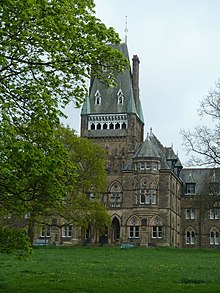
Lancaster is a city in Lancashire, England, and the main cultural hub, economic and commercial centre of City of Lancaster district. The city is on the River Lune directly inland from Morecambe Bay. Lancaster is the county town although Lancashire County Council has been based at County Hall in Preston since its formation in 1889.

The Royal Earlswood Hospital, formerly The Asylum for Idiots and The Royal Earlswood Institution for Mental Defectives, in Redhill, Surrey, was the first establishment to cater specifically for people with developmental disabilities. Previously they had been housed either in asylums for the mentally ill or in workhouses.
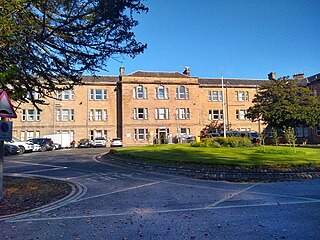
The Royal Edinburgh Hospital is a psychiatric hospital in Morningside Place, Edinburgh, Scotland. It is managed by NHS Lothian.

Leicester General Hospital (LGH) is a National Health Service hospital located in the suburb of Evington, about three miles east of Leicester City Centre, and is a part of University Hospitals of Leicester NHS Trust. It has approximately 430 beds. The hospital is the largest employer in the area.

Edward Graham Paley, usually known as E. G. Paley, was an English architect who practised in Lancaster, Lancashire, in the second half of the 19th century. After leaving school in 1838, he went to Lancaster to become a pupil of Edmund Sharpe, and in 1845 he joined Sharpe as a partner. Sharpe retired from the practice in 1851, leaving Paley as the sole principal. In 1868, Hubert Austin joined him as a partner, and in 1886, Paley's son, Henry, also became a partner. This partnership continued until Paley's death in 1895.
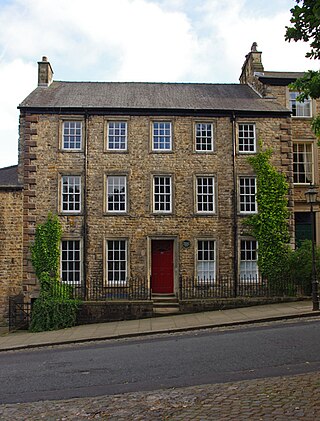
Sharpe, Paley and Austin are the surnames of architects who practised in Lancaster, Lancashire, England, between 1835 and 1946, working either alone or in partnership. The full names of the principals in their practice, which went under various names during its life, are Edmund Sharpe (1809–77); Edward Graham Paley (1823–95), who practised as E. G. Paley; Hubert James Austin (1841–1915); Henry Anderson Paley (1859–1946), son of Edward, usually known as Harry Paley; and, for a very brief period, Geoffrey Langshaw Austin (1884–1971), son of Hubert. The firm's commissions were mainly for buildings in Lancashire and what is now Cumbria, but also in Yorkshire, Cheshire, the West Midlands, North Wales, and Hertfordshire.

Kew Lunatic Asylum is a decommissioned psychiatric hospital located between Princess Street and Yarra Boulevard in Kew, a suburb of Melbourne, Australia. Operational from 1871 to 1988, Kew was one of the largest asylums ever built in Australia. Later known as Willsmere, the complex of buildings were constructed between 1864 and 1872 to the design of architects G.W. Vivian and Frederick Kawerau of the Victorian Public Works Office to house the growing number of "lunatics", "inebriates", and "idiots" in the Colony of Victoria.

Nathaniel Eckersley was an English mill-owner, banker and Conservative Party politician from Standish Hall, near Wigan in Lancashire. He sat in the House of Commons for three years in the 1860s, and two years in the 1880s.
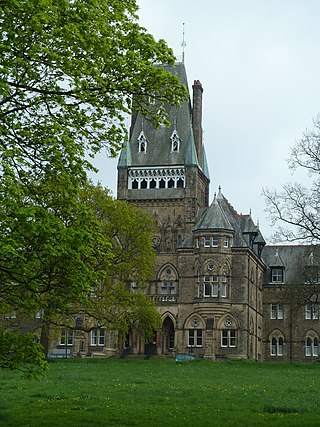
The Royal Albert Hospital was a hospital in Lancaster, Lancashire, England. It opened in 1870 as an institution for the care and education of children with learning problems. By 1909 there were 662 children in residence. Following new legislation in 1913, adults were also admitted. By the time of the introduction of the National Health Service in 1948 the hospital had 886 patients, and by the 1960s there were over 1,000 patients. Following legislation in the 1980s, the patients were relocated in the community, and the hospital closed in 1996. The building was acquired by Jamea Al Kauthar Islamic College to provide Islamic education for girls. The main part of the hospital is recorded in the National Heritage List for England as a designated Grade II* listed building, and its west lodge is listed at Grade II.
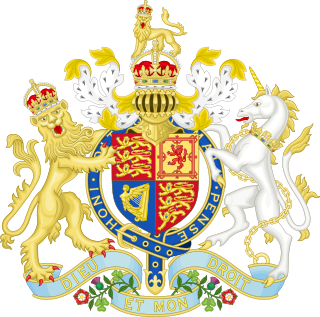
The Mental Deficiency Act 1913 was an act of Parliament of the United Kingdom creating provisions for the institutional treatment of people deemed to be "feeble-minded" and "moral defectives". People deemed "mentally defective" under this Act could be locked up indefinitely in a "mental deficiency colony", despite not being diagnosed with any mental illness or disability, or committing any crime.
Lancaster Medical School (LMS) is located in Lancaster, Lancashire in North West England and is part of the Faculty of Health and Medicine at Lancaster University. It is currently the UK's newest public medical school, with its first graduates, a cohort of 31, graduating in 2011. The current head of the medical school is Professor Marina Anderson.

Rainhill Hospital was a very large psychiatric hospital complex that was located in Rainhill, Merseyside, England.

Lancaster Moor Hospital, formerly the Lancaster County Lunatic Asylum and Lancaster County Mental Hospital, was a mental hospital in Lancaster, Lancashire, England, which closed in 2000.

Jamea Al Kauthar is an independent academic girls' establishment located in the former Royal Albert Asylum in Lancaster, Lancashire, England, educating girls in a Muslim tradition over the age of 11. Jamea Al Kauthar started with 60 pupils in 1996 and now has the capacity to cater for up to 450 students. Jamea Al Kauthar adopted and converted the Royal Albert Hospital historic building in 1996 and, on its conversion, received the moral and financial support of various members of the community.

Murthly Hospital, previously known as Murthly Asylum, Perth District Asylum and Perth and District Mental Hospital was a psychiatric hospital in Murthly, Perthshire which operated for 120 years.

Prestwich Hospital is a mental health facility in Prestwich, Greater Manchester, England.

Greaves House, now known as Greaves Park, is a Grade II listed house in Lancaster, England, now a pub and restaurant, and is also the name of the surrounding public park. It was built in 1843 by the Reverend Samuel Simpson and was the residence of many notable people for the next century.
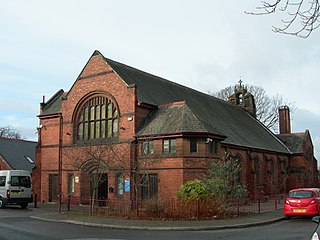
Winwick Hospital was a mental health facility at Winwick, Cheshire, England.

The Royal Dundee Liff Hospital, previously known as Dundee Lunatic Asylum and Dundee Royal Lunatic Asylum, was a mental health facility originally established in 1812 in Dundee, Scotland. It was originally located in premises in Albert Street Dundee, but later moved out of the town to new buildings in the nearby parish of Liff and Benvie. Buildings at Liff included Greystanes House, which was the main building, and, Gowrie House, which was the private patients' facility. Both Grade B listed buildings.

The Columbus Developmental Center (CDC) is a state-supported residential school for people with developmental disabilities, located in the Hilltop neighborhood of Columbus, Ohio. The school, founded in 1857, was the third of these programs developed by a U.S. state, after Massachusetts in 1848 and New York in 1851.
